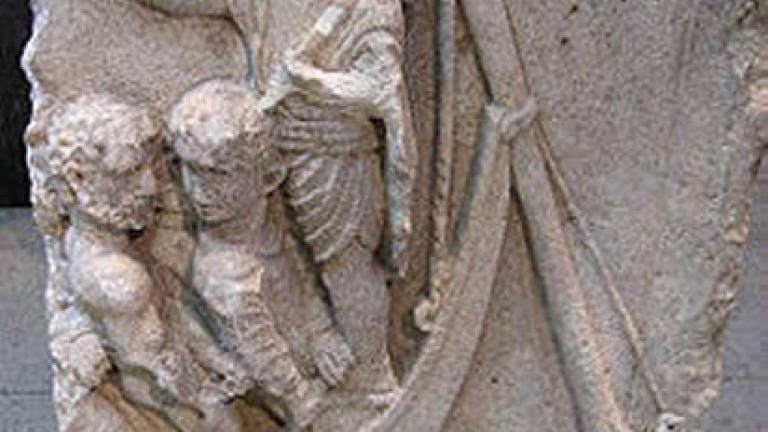Replica of ancient Roman barge in works

ARCHAEOLOGISTS and boatbuilders are replicating a nearly 2,000-year-old Roman barge at Xanten Archaeological Park in the German state of North Rhine-Westphalia.
Oaken, flat-bottomed and 15 metres long, barges of this type were an important means of transport on inland waterways in the Rome-controlled Rhineland in the late first century AD.
Remnants of a Roman barge were discovered during gravel extraction in a dried-up arm of the Rhine River near the Xanten district of Wardt in 1991.
About 7 metres long, the preserved barge section is one of the chief exhibits at the Xanten Archaeological Park's Roman Museum.
Completion of the replica, said to be the first of its kind in Germany and named Nehalennia - after the goddess worshipped as the protector of seafarers in the Roman province of Germania Inferior, on the west bank of the Rhine - is expected in late November.
The boat's maiden voyage is planned for the spring of 2015.
"Not on the Rhine, though - there's too much traffic," remarked the international project's director, archaeologist Gabriele Schmidhuber-Aspoeck.
Two millennia ago, flat-bottomed Roman barges were able to manoeuvre safely even in the shallow arms of the Rhine. \
A barge such as that found in Xanten could carry 10 tonnes of cargo and had a draught of only about a half-metre. It had no sail, and when not propelled by wind or water current, the crew had to row it, pole it or tow it with long ropes from the riverbank.
The archaeologists hope that construction of the replica, to cost approximately 500,000 euros (about $US700,000), will provide insight into ancient Roman boatbuilding techniques.
The renowned Dutch ship archaeologist Jaap Morel and a Dutch company from Utrecht specialising in historic shipbuilding have been hired for the project.
To save time and money, the replica is being built mostly with modern tools, Schmidhuber-Aspoeck said, pointing out that the barge's bottom planks have to be bent by hand at high temperatures, however.
Five tonnes of oak, nearly 2,000 iron nails and 25 metres of iron bands will be used. Visitors can observe the construction in a large tent next to the Roman Museum. – dpa